Are deer constantly eating your prized garden plants? You’re not alone! Discover 11 deer-resistant plants perfect for a thriving, deer-free landscape. Explore these resilient options to beautify your garden and deter those hungry visitors.
Lavender: A Fragrant Barrier
Lavender remains a top choice for gardens, celebrated for its vivid color and delightful aroma. Its deep purple blooms offer beauty and act as a natural deer repellent. Deer typically dislike lavender’s potent scent, making it a favored option for gardeners aiming to safeguard their precious plants in 2025.
The photo showcases a vibrant lavender field. Tall flower spikes reach for the clear blue sky. This beautiful scene demonstrates lavender’s natural appeal. It also shows how it can form a fragrant barrier, deterring unwanted guests.
Beyond deterring deer, lavender offers diverse applications. Explore its use in cooking, crafting, and aromatherapy. Envision the calming aroma of dried lavender filling your home. Or savor the refreshing taste of lavender lemonade during summer. Lavender’s numerous uses and advantages make it a wonderful asset to any garden.
Sage: Aromatic and Robust
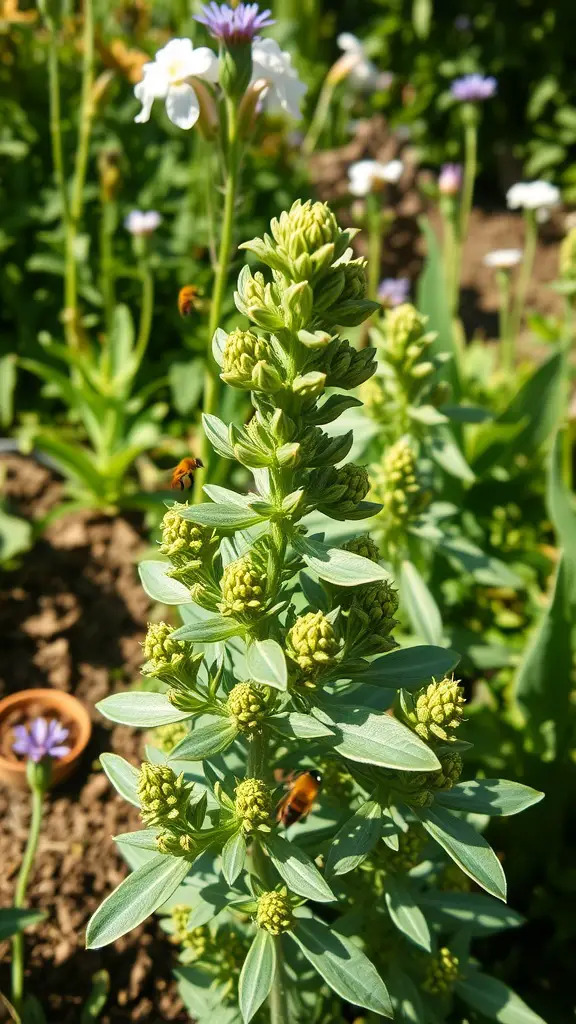
Sage offers more than just culinary flavor; it’s a wonderful garden plant. Its robust green leaves and distinctive flower buds enhance any outdoor area. The image showcases sage’s appealing vibrant foliage and budding flowers.
Sage thrives in well-drained soil and loves sunshine. This makes it an easy-care option for any gardener. Its potent scent naturally repels deer, protecting your precious plants. Moreover, sage draws in helpful pollinators like bees, vital for a flourishing garden.
Sage, when strategically planted with other deer-resistant varieties, elevates your garden’s beauty. It also adds a powerful flavor to your cooking. Use it in delicious recipes or simply appreciate its presence. Sage is a dependable option for gardeners wanting to deter deer in 2025.
Ferns: Lush Greenery for Shade
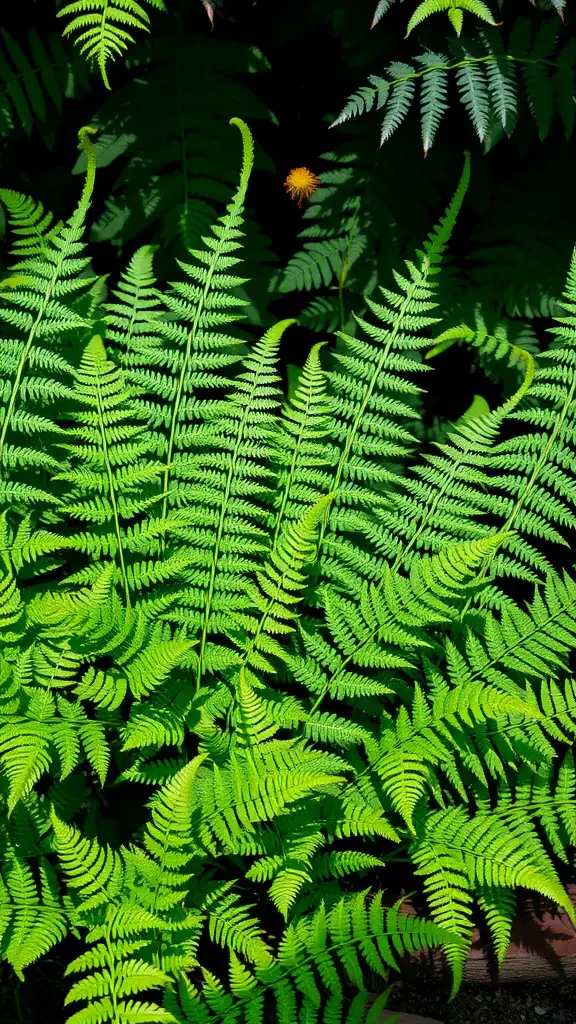
Looking to brighten up those dim garden spots? Ferns are your answer! They flourish in shade and offer a delicate, feathery look that complements other plants perfectly.
Lush green ferns dominate the scene, their elegant fronds curving skyward. This vibrant color brightens shady spots and fosters a tranquil ambiance. Ferns are a great choice for gardens prone to deer, as they are naturally deer-resistant. This makes them a practical and beautiful addition to any landscape in 2025.
Ferns offer incredible diversity, showcasing unique forms and sizes. From the timeless elegance of the lady fern to the captivating beauty of the Japanese painted fern, a perfect choice exists for every garden aesthetic. Grouping ferns together amplifies their visual appeal, fostering a vibrant, forest-like atmosphere.
To keep your ferns thriving, provide consistent moisture and excellent soil drainage. Ferns are easy to care for, ideal for experienced and novice gardeners. Enhance your shaded garden with these beautiful, low-maintenance plants!
Lantana: Colorful and Resilient
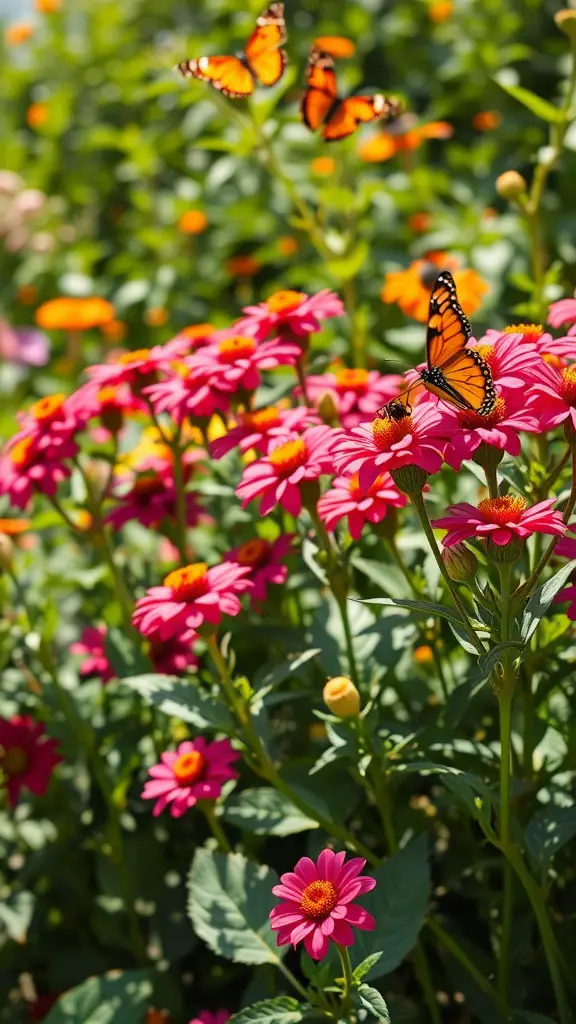
Lantana remains a popular choice for gardens in 2025, celebrated for its vibrant and joyful hues. This image showcases radiant pink blossoms nestled amongst rich, verdant foliage, creating an energetic ambiance. Butterflies are especially attracted to these flowers, transforming your garden into a beautiful and thriving wildlife sanctuary.
Looking for a deer deterrent? This plant is an excellent solution. Deer dislike its potent smell and flavor. It’s also adaptable and easy to care for, perfect for any garden.
Lantana’s standout feature is its extended bloom time, lasting from spring to fall. Expect vibrant, non-stop color that enhances any garden. Combine it with other water-wise plants for a beautiful, sustainable landscape in 2025.
Adding lantana to your garden is a great way to draw in helpful pollinators. This boosts the beauty of your space and aids local wildlife. Lantana thrives in pots or garden beds, guaranteeing a more vibrant outdoor area.
Daffodils: Colorful and Toxic to Deer

Daffodils instantly brighten any garden space. Their vibrant yellow flowers herald the arrival of springtime. Spotting these clustered blooms is a delightful and unmistakable sign of the season.
Daffodils stand out because deer naturally avoid them. Unlike many garden plants, daffodils contain toxins that deer find unpalatable. This allows you to appreciate their vibrant blooms without deer damage.
These plants contain toxic compounds in their bulbs, leaves, and blooms. This natural defense deters deer and other plant-eating animals. Gardeners seeking to safeguard their gardens often choose them for this reason.
These flowers are also simple to cultivate. They flourish in diverse garden settings. Well-drained soil and sunny locations are ideal. They introduce vibrant color and provide a useful answer for gardeners dealing with deer issues in 2025.
Marigolds: Bright Blooms that Deter
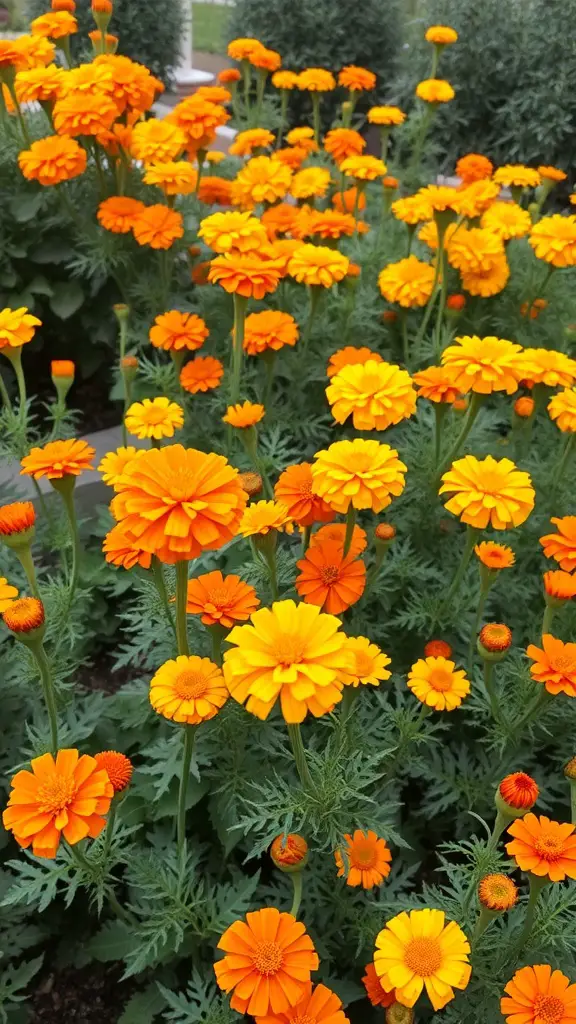
Marigolds offer more than just beauty to your garden. These sunny flowers, with their bright orange and yellow hues, quickly enhance any outdoor setting. The picture displays a thriving collection of marigolds, highlighting their abundant blossoms and deep green leaves.
Marigolds are excellent for keeping deer away. Their potent smell repels many garden pests, especially deer. Planting marigolds creates a vibrant, protective border. This helps safeguard your more delicate plants from being eaten.
Beyond their natural insect repellent qualities, marigolds are easy to care for. They flourish in sunny locations and adapt to different soil conditions. Moreover, they offer vibrant blooms from spring through fall, ensuring extended color. Plant them in garden beds, along borders, or in pots for a delightful addition to your outdoor space.
Yucca: Striking Architectural Plant
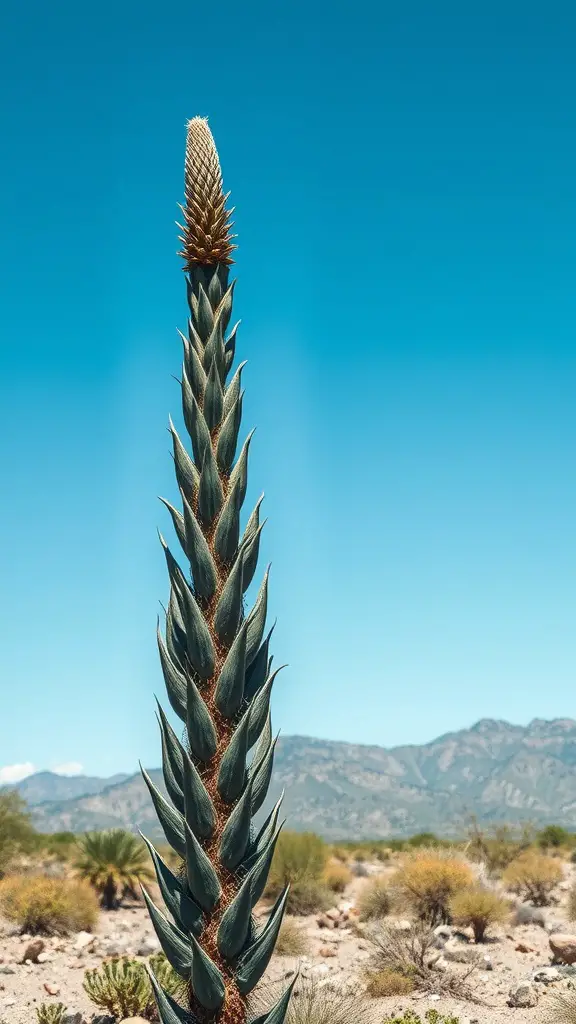
Yucca plants are truly captivating. They boast a distinctive, upright form. Their lengthy, pointed leaves create a dramatic outline. This makes them excellent for gardens and landscapes. The image displays a yucca in bloom. Notice the tall flower spike. It enhances the plant’s visual appeal.
Yuccas excel in arid, sun-drenched locations, ideal for deer-prone areas. Deer generally steer clear of yuccas because of their rigid leaves and sharp points. This protects your garden from unwanted grazing. Yuccas, whether grouped or planted individually, introduce a striking visual element to your landscape. Consider them for a resilient and beautiful 2025 garden design.
Yuccas are also incredibly easy to care for and thrive in dry conditions, a major plus for time-strapped gardeners. After they’re established, they need very little watering and can handle different kinds of soil. This hardiness makes them perfect for water-wise gardens (xeriscaping). Therefore, if you’re looking to beautify your outdoor space and deter deer, yuccas are an excellent option.
Thyme: Culinary Delight and Defense
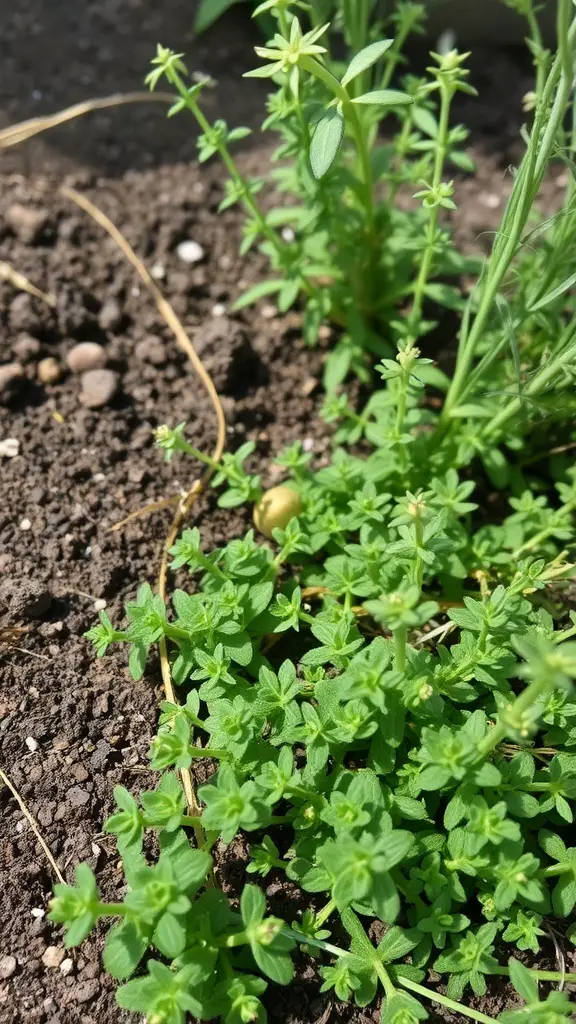
In 2025, thyme remains a top pick for deer-resistant gardens. Beyond its culinary uses, this herb effectively deters deer. The picture highlights its dense, green foliage. Deer dislike thyme’s potent aroma, making it a smart choice for gardeners facing deer problems.
Beyond keeping deer away, thyme enhances countless recipes. It complements meats, veggies, and marinades beautifully. Picture fresh thyme sprinkled on roast chicken or stirred into a vegetable medley. The culinary uses are truly limitless!
Cultivating thyme is easy. It flourishes in sunny locations with excellent soil drainage. Minimal watering is needed. With just a bit of attention, you’ll enjoy a lovely herb. It’s great for cooking and also benefits your garden by protecting other plants.
Want a beautiful, deer-resistant garden? Plant thyme! This simple addition offers fantastic benefits for your cooking and landscape in 2025.
Boxwood: Elegant and Versatile

Boxwood remains a top garden pick, and its appeal is clear. Its rich green leaves offer a stunning backdrop for any outdoor space. The image showcases precisely pruned boxwood hedges, adding form and clarity to the garden’s design. The bright green hue revitalizes the area, creating a welcoming and enjoyable atmosphere. These hedges are especially popular in 2025 for their low-maintenance and timeless appeal.
These visually appealing plants also deter deer. Enjoy your garden without deer damage. Boxwood adapts well to diverse environments, offering versatility for any space.
Boxwood’s beauty extends beyond aesthetics. It excels in crafting refined borders and hedges. Its sculptable nature enhances any garden’s sophistication. Boxwood seamlessly integrates into both formal and casual landscapes. It’s a dependable, low-maintenance option that elevates outdoor spaces.
Butterfly Bush: A Pollinator Magnet
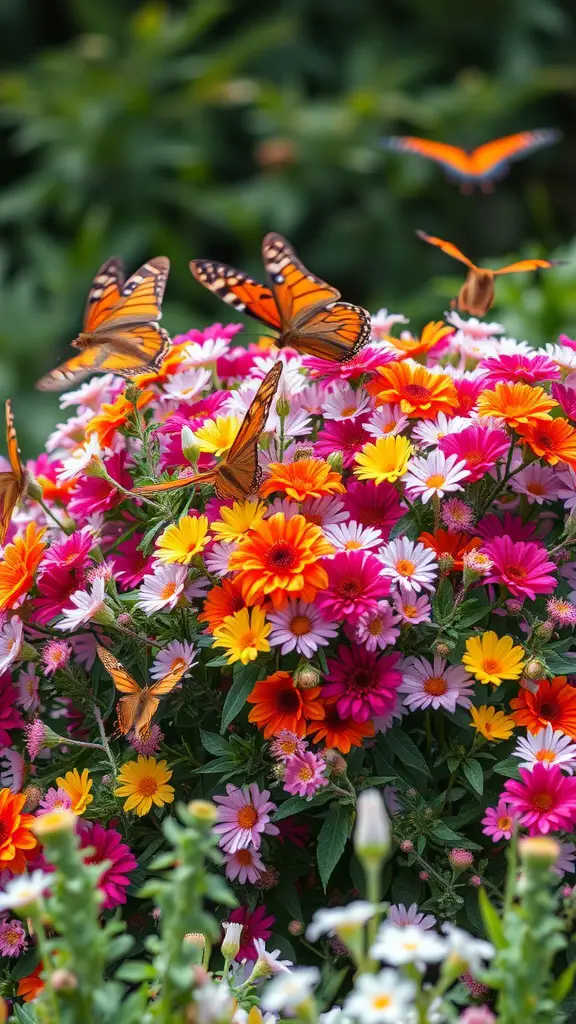
Butterfly bushes, known for their bright flowers, are a joy to see and good for the environment. The picture shows a beautiful mix of colors, with butterflies happily flitting around the blossoms. This vibrant scene perfectly shows a garden full of life.
These vibrant plants offer more than just beauty. They are magnets for pollinators, enhancing any garden space. The striking orange and yellow hues in the photo demonstrate their allure to butterflies. To build a sanctuary for these delicate insects, consider planting butterfly bushes.
Butterfly bushes are incredibly hardy. Deer usually avoid them, so you can enjoy their vibrant colors without garden pests. Consider adding one to your yard to beautify your space and help local butterflies thrive.
Russian Sage: Silvery Foliage and Resilience
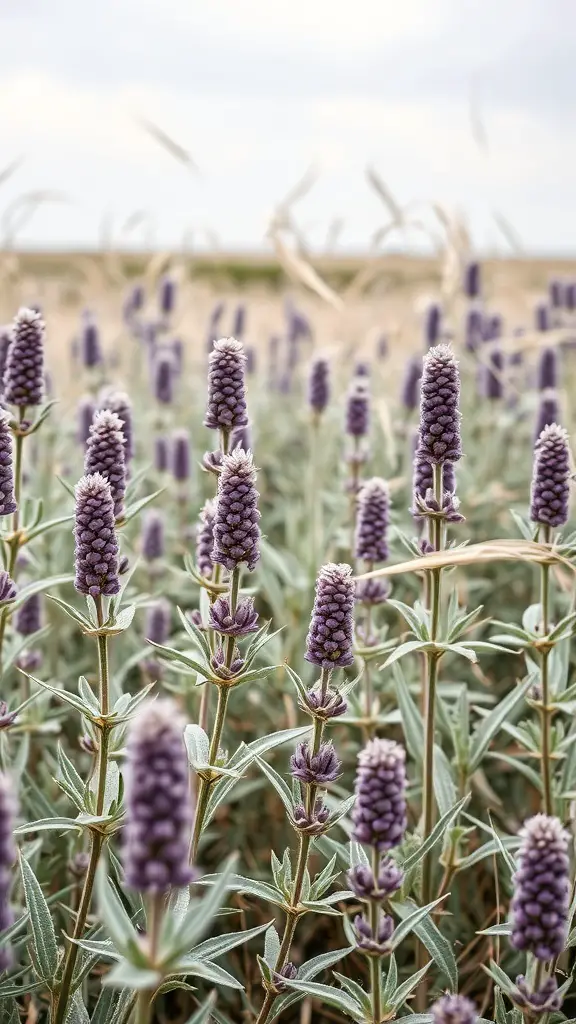
Russian Sage, known for its vibrant purple blooms, enhances any garden space. Its delicate, silver-toned leaves offer a stunning visual contrast, making it a landscape standout. The plant’s upright stems bring a light, airy quality, perfect for garden borders or as a captivating centerpiece.
Russian Sage excels in challenging environments, a key reason for its popularity. It’s drought-tolerant and needs minimal watering, ideal for easy-care gardens. In 2025, its deer resistance remains a significant advantage for gardeners facing deer problems.
Russian Sage, reaching two to four feet tall, effectively fills gaps without blocking sunlight for nearby plants. Its late-summer blooms provide vibrant color as other plants fade. Furthermore, its fragrant leaves naturally repel pests, offering an additional advantage.

